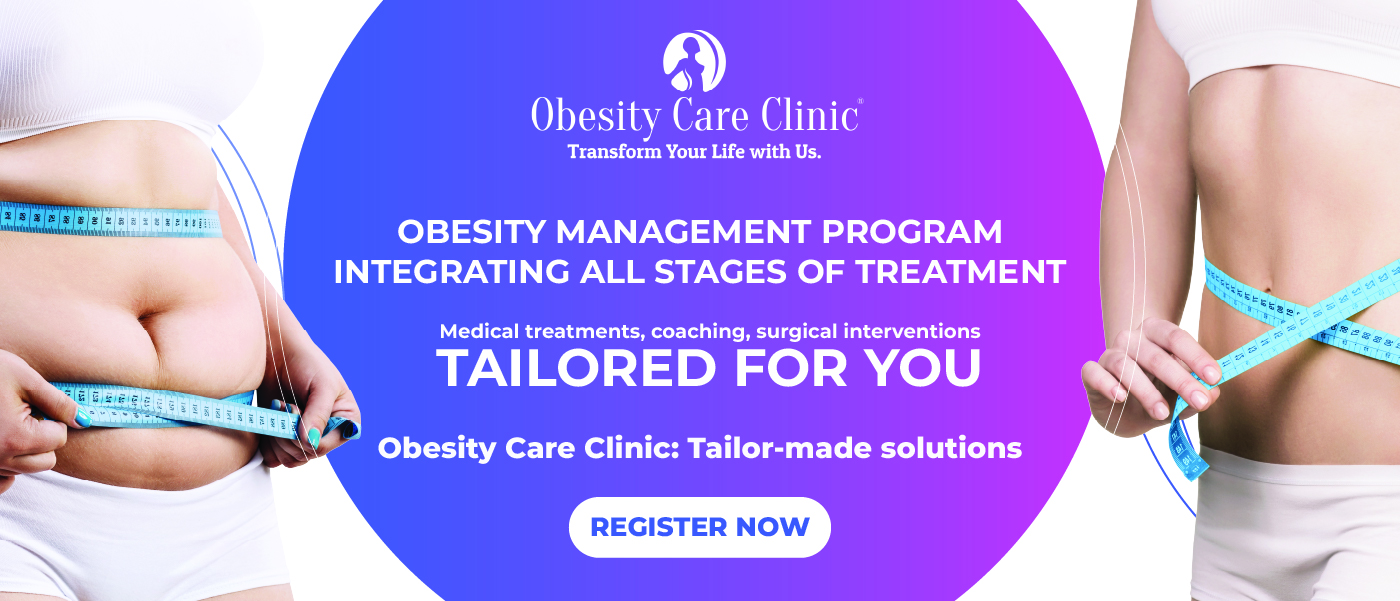Table of Contents
Introduction
Endoscopic Sleeve Gastroplasty (ESG) is a minimally invasive weight loss procedure that has recently gained popularity as a safe and effective alternative to traditional bariatric surgeries. ESG works by reducing the size of the stomach using an endoscope, which leads to a feeling of fullness[1] and helps patients lose weight. In this patient’s guide to ESG, we will provide a comprehensive overview of the procedure, its benefits, risks, and success rates.
The first section of this guide will introduce ESG and explain how it works. We will also compare ESG with other weight loss surgeries and discuss eligibility criteria for ESG. Next, we will discuss how to prepare for ESG, including pre-procedure requirements and dietary and lifestyle changes. We will also provide a detailed description of what to expect during the procedure, the duration of the procedure, and anaesthesia during the procedure.
Post-procedure care of endoscopic
After the ESG procedure, patients must follow specific guidelines for post-procedure care and attend follow-up appointments. We will provide an overview of these guidelines and discuss possible side effects.[2] Additionally, we will examine the potential benefits of ESG and possible risks and complications. Finally, we will present an overview of studies and data on ESG’s success rate, including the factors that can affect it.
If you are considering ESG for weight loss, it is essential to understand the procedure thoroughly and consult a healthcare provider to determine if it is the right option.
Understanding ESG
Endoscopic Sleeve Gastroplasty (ESG)[3] is a minimally invasive weight loss procedure involving an endoscope to reduce the stomach size. This procedure creates a sleeve-shaped stomach, resulting in a feeling of fullness and weight loss. ESG is an outpatient procedure; patients can typically go home the same day.
Compared to traditional bariatric surgeries such as gastric bypass and sleeve gastrectomy, ESG is less invasive and has a lower risk of complications. A systematic review and meta-analysis assessing the ASGE PIVI thresholds for adopting endoscopic bariatric therapies showed that ESG resulted in a mean excess weight loss of 15.9% at 12 months, which was statistically significant and met the PIVI threshold for clinical success. Moreover, a study by Sharaiha et al. found that ESG significantly reduces body mass index (BMI) and metabolic complications in obese patients, including type 2 diabetes, high blood pressure, and high cholesterol.
Who is it recommended for? Endoscopic sleeve gastroplasty
ESG is typically recommended for patients with a BMI of 30 to 40 who have yet to succeed with diet and exercise alone. Eligibility criteria for ESG may include a history of weight-related health problems, such as sleep apnea or joint pain. ESG is unsuitable for patients who have had prior gastrointestinal surgeries, have an account of bleeding disorders, or are pregnant.
During the ESG procedure, patients are sedated, and a flexible endoscope is inserted through the mouth into the stomach. The endoscope then places sutures along the stomach’s greater curvature, creating a sleeve-like shape. The procedure takes approximately 60-90 minutes to complete.
ESG is a safe and effective weight loss option for eligible patients. Like any medical procedure, it does come with potential risks and complications. It is essential to discuss the risks and benefits of ESG with a healthcare provider[4] to determine if it is the right option for you.
Preparing for ESG
Preparing for Endoscopic Sleeve Gastroplasty (ESG) involves several steps:
Include consultation with a healthcare provider, pre-procedure requirements, and dietary and lifestyle changes. These steps ensure the procedure’s success and minimise potential risks and complications.
Consultation with a healthcare provider is the first step in preparing for ESG. Patients will discuss their weight loss goals and medical history with their healthcare provider during this consultation.[5] The healthcare provider will also assess the patient’s eligibility for ESG and discuss the procedure’s risks and benefits. In addition, patients will receive instructions on preparing for the procedure and any necessary pre-procedure testing.
Pre-procedure requirements for ESG may include fasting for a certain period before the procedure, stopping certain medications, and avoiding smoking. Patients may also need to undergo tests, such as blood work or imaging studies, before the procedure.
Dietary and lifestyle changes with endoscopic sleeve
Dietary and lifestyle changes are also essential for preparing for ESG. Patients must follow a specific diet before the procedure, including a low-calorie or liquid diet. These diets help reduce the liver’s size and make the procedure safer and more comfortable. Patients must also make long-term dietary changes to support weight loss after the procedure.
In addition to dietary changes, patients must make lifestyle changes to support weight loss after ESG. This may include increasing physical activity and reducing sedentary behaviour. Patients must also attend follow-up appointments and adjust their diet and exercise routine based on their healthcare provider’s recommendations.
Preparing for ESG involves several steps, including consultation with a healthcare provider, pre-procedure requirements, and dietary and lifestyle changes. These steps are essential for ensuring the procedure’s success and achieving long-term weight loss.
The ESG Procedure
Endoscopic Sleeve Gastroplasty (ESG) is a minimally invasive weight loss procedure involving using an endoscope to reduce the stomach size. ESG typically takes 60-90 minutes[6] to complete and is performed under sedation. The following section will provide a detailed description of what to expect during the ESG procedure, including the duration of the procedure and anaesthesia.
During the ESG procedure, patients lie on their backs while the endoscope is inserted through their mouth into the stomach. The endoscope has a suturing device to place sutures along the stomach’s greater curvature, creating a sleeve-like shape. The sutures help reduce the stomach size and develop a feeling of fullness, resulting in weight loss. The procedure is performed entirely through the mouth, with no incisions or scars.
The duration of the ESG procedure is typically 60-90 minutes, depending on the complexity of the patient’s case. Patients are sedated during the procedure and are generally unaware of what is happening. After the procedure is complete, patients are taken to a recovery area, where they are monitored until the effects of the sedation wear off.
Anaesthesia during the endoscopic sleeve gastroplasty
A board-certified anesthesiologist typically provides anaesthesia during the ESG procedure.[7] The type of anaesthesia used may vary depending on the patient’s medical history and the healthcare provider’s recommendations. Generally, patients are given a combination of sedatives and pain relievers to ensure their comfort during the procedure. The anaesthesia used during ESG is typically safe, and the risk of complications is low.
ESG procedure is a safe and effective weight loss option for eligible patients. However, like any medical procedure, it does come with potential risks and complications. It is essential to discuss the risks and benefits of ESG with a healthcare provider to determine if it is the right option for you.
Recovery from ESG
Recovery from Endoscopic Sleeve Gastroplasty (ESG) is relatively for most patients.
Patients resume their normal activities within a few days. However, it is essential to follow post-procedure guidelines to ensure a smooth recovery and reduce the risk of complications.[8]
After ESG, patients will be taken to a recovery area where they will be monitored until the effects of the sedation wear off. Patients may experience discomfort, bloating, or nausea immediately after the procedure, but these symptoms generally subside within a few hours. Patients are typically discharged from the hospital on the same day as the procedure.
Dietary & lifestyle changes after endoscopic sleeve gastroplasty
Patients must follow a specific diet for several weeks after the procedure. This diet may include a liquid or soft food diet for the first few days, followed by a gradual transition to solid foods. Patients must also avoid certain foods, such as spicy or acidic, for a few weeks after the procedure.
In addition to dietary changes, patients must make lifestyle changes to support weight loss after ESG. This may include increasing physical activity, reducing sedentary behaviour, and attending follow-up appointments with their healthcare provider.
Potential risks and complications with endoscopic
ESG is generally well-tolerated, and most patients experience few complications. However, like any medical procedure, there are potential risks and complications, including bleeding, infection, or injury to the stomach or other organs. Patients should contact their healthcare provider immediately if they experience severe or persistent abdominal pain, fever, or other symptoms after the procedure.
Recovery from ESG involves following post-procedure guidelines, including dietary and lifestyle changes, to support weight loss and reduce the risk of complications. Patients should discuss post-procedure approaches with their healthcare provider to ensure a smooth recovery and achieve long-term weight loss.
Conclusion
Endoscopic Sleeve Gastroplasty (ESG) is a minimally invasive weight loss procedure that can be an effective option for eligible patients.[9] ESG involves using an endoscope to reduce the size of the stomach, which creates a feeling of fullness and helps to support weight loss. While ESG is generally safe and well-tolerated, discussing the risks and benefits with a healthcare provider to determine if it is the right option for you is essential.
References
- Sharaiha RZ, Kumta NA, Saumoy M, et al. Endoscopic sleeve gastroplasty significantly reduces body mass index and metabolic complications in obese patients. Clin Gastroenterol Hepatol. 2017;15(4):504-510.e2.
- ASGE Bariatric Endoscopy Task Force; Abu Dayyeh BK, Kumar N, Edmundowicz SA, et al. ASGE Bariatric Endoscopy Task Force systematic review and meta-analysis assessing the ASGE PIVI thresholds for adopting endoscopic bariatric therapies. Gastrointest Endosc. 2015;82(3):425-438.e5.
- Sharaiha RZ, Kedia P, Kumta N, et al. Initial experience with endoscopic sleeve gastroplasty: technical success and reproducibility in the bariatric population. Endoscopy. 2015;47(2):164-166
- Arrese M, Barría C, Sánchez P, et al. Efficacy of endoscopic sleeve gastroplasty (ESG) for weight loss in obese patients. Obes Surg. 2017;27(9):2250-2258.
- Kumar N, Sullivan S, Thompson CC. The role of endoscopic therapy in obesity management: intragastric balloons and beyond. Curr Opin Gastroenterol. 2017;33(4):294-301.
- ASGE Bariatric Endoscopy Task Force; Abu Dayyeh BK, Kumar N, Edmundowicz SA, et al. ASGE Bariatric Endoscopy Task Force systematic review and meta-analysis assessing the ASGE PIVI thresholds for adopting endoscopic bariatric therapies. Gastrointest Endosc. 2015;82(3):425-438.e5.
- Sharaiha RZ, Kumta NA, Saumoy M, et al. Endoscopic sleeve gastroplasty significantly reduces body mass index and metabolic complications in obese patients. Clin Gastroenterol Hepatol. 2017;15(4):504-510.e2.
- Genco A, Soricelli E, Casella G, et al. Gastroesophageal reflux disease and Barrett’s esophagus after laparoscopic sleeve gastrectomy: a possible, underestimated long-term complication. Surg Obes Relat Dis. 2017;13(4):568-574.
- Sharaiha RZ, Kedia P, Kumta N, et al. Initial experience with endoscopic sleeve gastroplasty: technical success and reproducibility in the bariatric population. Endoscopy. 2015;47(2):164-166.
- Lopez-Nava G, Galvão MP, Bautista-Castaño I, et al. Endoscopic sleeve gastroplasty: how I do it?. Obes Surg. 2015;25(8):1534-1538.







